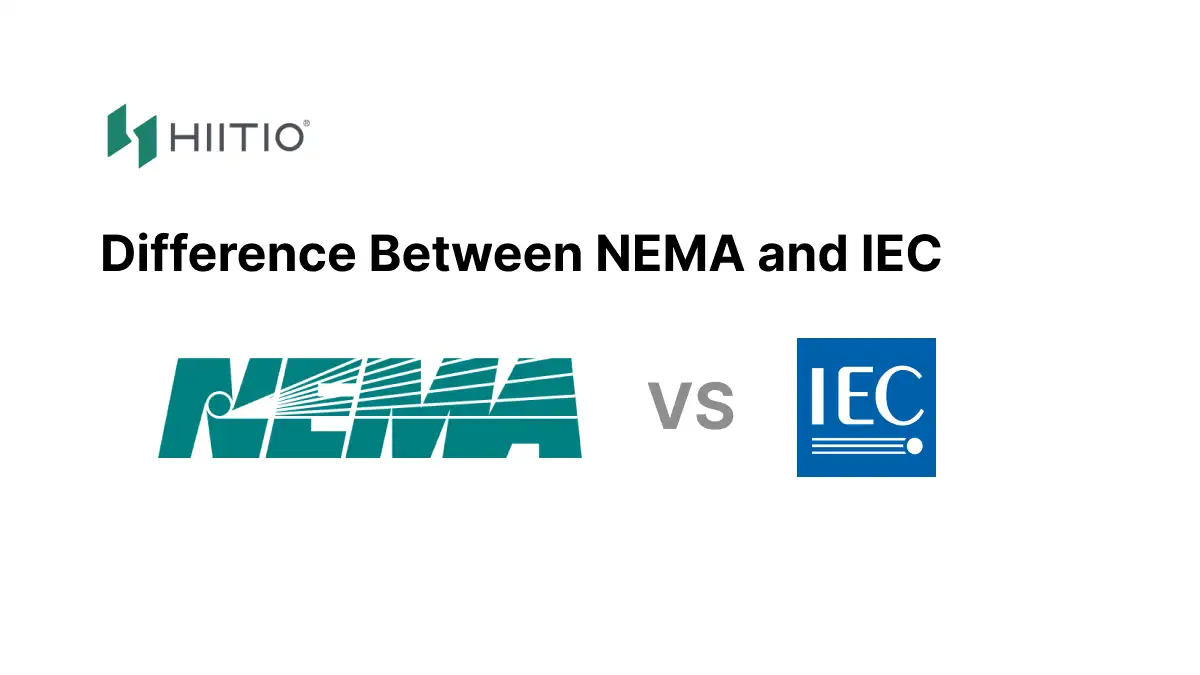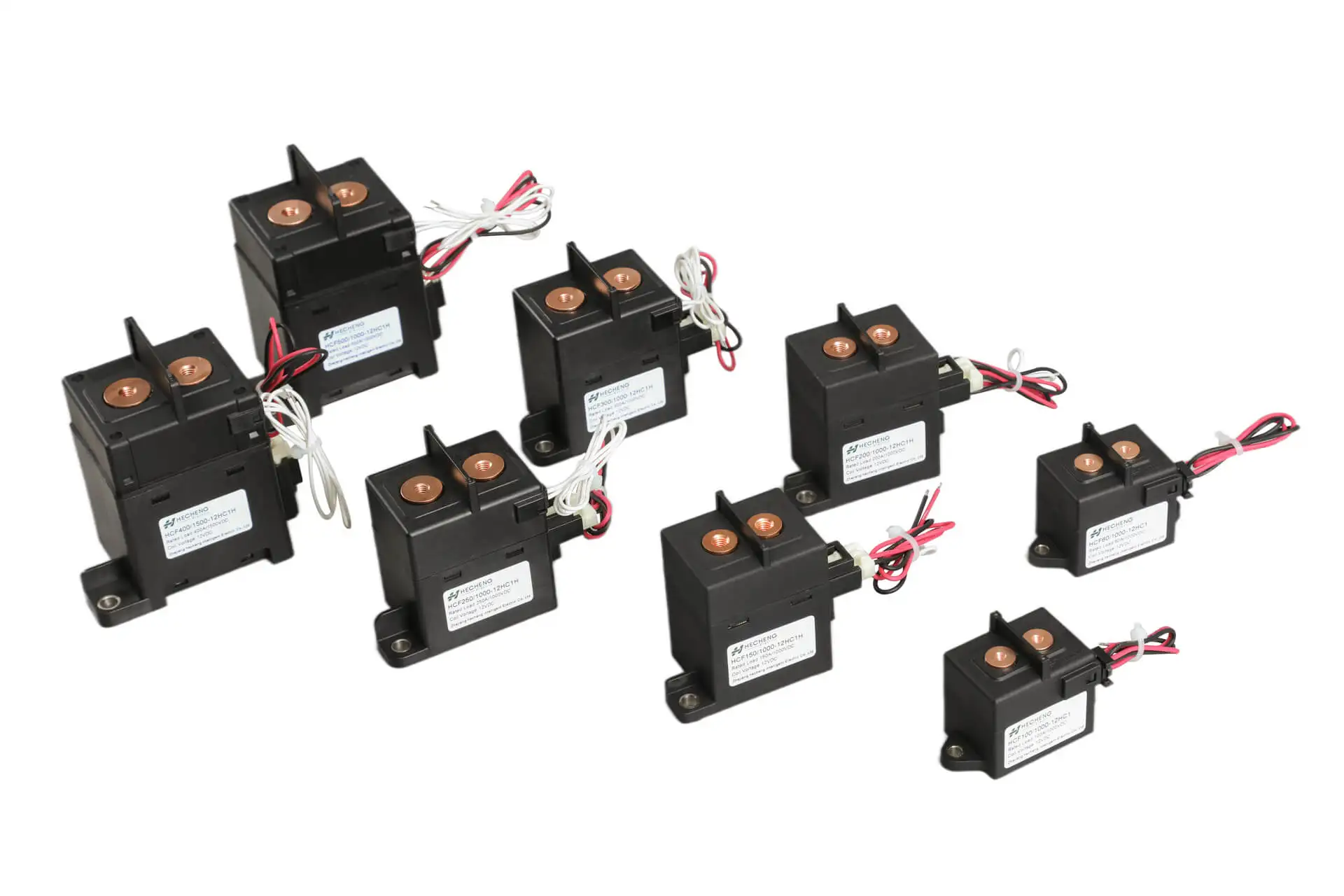Navigating electrical equipment standards is hard. Many organizations and standards are involved. Two important players in this field are the International Electrotechnical Commission (IEC) and the National Electrical Manufacturers Association (NEMA).
Understanding the differences between these organizations and their standards is crucial. It helps you make informed decisions in the electrical industry. In this overview, we will look at the roles of IEC and NEMA. We will explore their standards. We will compare their good and bad points. And, we will debunk common misunderstandings about their systems. Let’s start by examining the fundamental characteristics of each organization.
What is IEC?
The IEC was established in 1881. It is a key part of electrical and electronic technology. The IEC is a non-profit, non-governmental organization. It is dedicated to making and spreading global standards. These standards govern many electrical, electronic, and related technologies. Its impact is big. It goes beyond just standardization to creating and spreading units of measure. These units, like Hertz and Gauss, are known worldwide.
These standards are key. They ensure compatibility, safety, and efficiency across many industries worldwide. The IEC provides a framework for sameness and reliability. It helps trade flow smoothly and spurs global innovation. The IEC continues to drive progress. It does so in key areas like power, telecom, electronics, and renewable energy.
Moreover, the IEC’s commitment to advancing electrotechnology transcends setting standards. It engages with industry stakeholders, regulators, and academics. It does this to address new challenges and opportunities. The IEC promotes collaboration and knowledge exchange. It speeds progress and fosters a culture of improvement in the field.
In essence, the IEC’s legacy is one of innovation, collaboration, and progress. Its standards are guiding principles. They enable breakthroughs and innovations. The standards shape the modern world. They lay the foundation for a brighter, more connected future.
What is NEMA?
It was founded in 1926. The National Electrical Manufacturers Association (NEMA) is a prominent trade association. It represents electrical equipment manufacturers across the United States. It was a key moment in the industry’s history. NEMA began advocating for standard “frame” sizes. This aimed to promote interchangeability between parts from different makers. It also aimed to prioritize safety factors that exceed design ratings.
This emphasis on standardization has yielded significant benefits for the electrical industry. NEMA has enhanced compatibility and reliability. It has also fostered innovation by promoting standard “frame” sizes. This has cut costs for both makers and buyers. It did this by simplifying making. Moreover, standard frame sizes have made things easy to use and install. They have also helped the spread of electrical equipment and systems.
Also, NEMA is committed to promoting efficient and innovative electrical equipment. This is shown in its ongoing efforts. It develops and promotes best practices, safety standards, and new tech. NEMA collaborates with industry stakeholders, regulators, and research institutions. They continue to drive progress and promote excellence in making electrical equipment.
In conclusion, NEMA established and advocated for standardized “frame” sizes. This has been pivotal in shaping the US electrical equipment industry. NEMA prioritizes compatibility, reliability, and safety. This has simplified manufacturing and cut costs. It has also fostered an innovative and efficient culture. This culture still drives the industry.
The Difference Between IEC and NEMA
The IEC and the NEMA differ in more than just their contactor design and standards. NEMA prioritizes robustness. Its contractors boast a 25% service factor. In contrast, the IEC emphasizes space and cost efficiency. This difference is shown through careful testing of components to their exact design ratings. Also, it is shown through the use of utilization categories. They classify devices based on their specific applications.
To elaborate further, let’s delve into the utilization categories employed by IEC. AC-1 is for applications with resistive or slightly inductive loads. These include heater circuits. AC-3 is different. It’s made for the normal starting and stopping of squirrel cage motors. It also handles occasional jogging. Meanwhile, AC-4 is like AC-3. It adds functions like inching and plugging. These need precise control of motor current. For example, for jogging and reversing at speed.
The precise categories help. They let manufacturers and users match contractors to their intended uses. This optimization boosts efficiency and performance. It also cuts costs from over-engineering or underperformance. In addition, standard classification helps devices work together. It also works across different makers and places. This fosters integration and drives innovation in the electrical industry.
By understanding and embracing these small differences, stakeholders can make informed decisions. The differences are between IEC and NEMA standards. They do this when selecting contactors and other electrical parts. This understanding ensures that the chosen parts fit their applications well. This fit guarantees top performance and reliability.
IEC vs NEMA: Pros and Cons
IEC and NEMA each have their own advantages and drawbacks. They apply to electrical equipment. Let’s delve deeper into their pros and cons:
IEC:
Pros:
- Generally less expensive
- Offers versatility, tailored to meet specific life/current requirements in various applications
- Compact design
- Reacts faster to overload situations
- Inherently finger-safe, eliminating the need for safety covers
- Provides a wide range of options for specific current or power ratings
Cons:
- May require a more critical selection due to the multitude of options available
NEMA:
Pros:
- Versatile, with broad ratings applicable to many different applications
- Better at withstanding short circuits
- Offers larger-sized devices suitable for heavy-duty applications
- Better suited for the North American market
- Open design allows for easier maintenance and inspection
Cons:
- Generally more expensive, especially for devices below 100A or 50HP
- Safety covers are often required due to the open design
- Limited options for networking components in distributed control systems compared to IEC
In summary, choosing between IEC and NEMA depends on understanding the application’s needs. IEC may be better because it is cheaper and more compact in well-defined conditions. NEMA could be better for less-defined or heavy-duty applications. You must consider factors like safety, cost, and compatibility. They matter when choosing the right device for the job.
Common Misunderstandings Debunked
NEMA starters look robust. Many think their larger size means they are tougher than IEC starters. However, this visual difference is mainly due to NEMA starters. They are designed to be oversized. Both NEMA and IEC starters undergo tough tests. They aim to meet industry standards for performance and safety.
The wrong IEC classification leads to blame on the IEC system. Another error arises when the wrong IEC classification is applied to an application. This leads to performance issues. In such cases, the blame is often placed on the IEC system itself. However, it’s essential to recognize that UL testing standards ensure safety and reliability. They are the same for both IEC and NEMA starters. So, correct classification and following standards are crucial. They are key for good performance, no matter the system used.
Many think NEMA devices are only for the North American market, while IEC devices are for global use. NEMA is mainly used in North America and IEC is more globally recognized. But, both have uses beyond their regions. NEMA devices are found in global markets. IEC devices are used in North America, but less.
Debunking the misunderstandings shows the complexity of NEMA and IEC standards. It clears up the confusion. Visual perception may lead to misconceptions about NEMA starters. However, NEMA and IEC devices both undergo tough testing. They do it to meet industry standards for safety and performance.
Also, if we ignore the global uses of NEMA devices and assume they are only for North America, we miss them in world markets. Similarly, IEC standards are globally recognized. They are also used in North America but to a lesser extent. So, you must fully understand NEMA and IEC systems. This is vital for proper classification and adherence to standards. It ensures top performance and safety in electrical applications worldwide.

Get Your High Voltage DC Circuit Protection Solution
High Voltage DC Contactor, High Voltage DC Fuse Manufacturer for New Energy Industry
Bottom Line
The IEC and NEMA play key roles. They shape the standards and practices of the electrical industry. IEC sets global standards for electrical tech. It also covers electronics and related tech. NEMA focuses on representing US electrical equipment makers. Despite their differences, both organizations strive to ensure compatibility, safety, and efficiency. They do so across various industries globally.
IEC and NEMA contribute to electrotechnology’s advancement. They do so through rigorous testing and standardization efforts. This work drives progress in power generation, telecommunications, consumer electronics, and renewable energy. Also, debunking common misunderstandings about their systems is important. For example, there are myths about the power of NEMA starters. And, about NEMA devices being exclusive to the North American market. This shows the need to make informed choices. And, to follow standards in the electrical industry.
The landscape of technology keeps changing. Knowing the details of IEC and NEMA standards is vital. This is true for engineers, manufacturers, and consumers. By following these standards and debunking myths. Stakeholders can navigate the electrical industry with confidence. They will ensure top performance, safety, and innovation in electrical applications worldwide.



